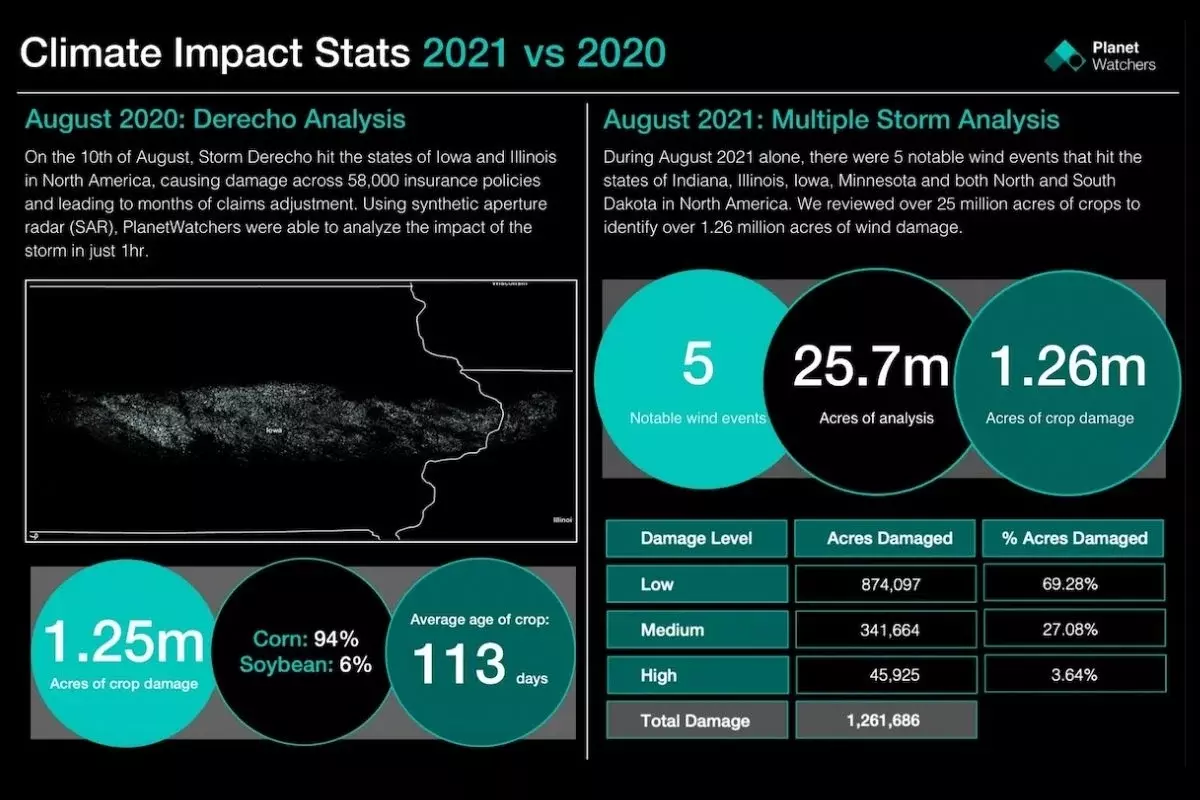It is being said that extreme weather events are the new norm. Concerns for the increasing number of extreme weather events worldwide have been detailed on the news, discussed at COP 26 in 2021, and are being recorded by expert weather analysts.
Flooding and wind damage from these extreme weather events not only causes devastating damage to residential and commercial areas but is having a detrimental effect on agriculture.
The midwestern states of the U.S. are one of the largest producers of corn worldwide but suffer severe storms damaging millions of acres of crops each year. The high winds and violent rain and hail flatten and break the crops, so they are unfit for harvest. The extent of the damage and loss in crops means that expected yields are dramatically reduced, impacting the food supply.
The increasing impact on crop production could be detrimental to our food supply chain. A reduction in agricultural productivity would lead to rapid price increases.
Our climate impact analysis uses historical and live SAR (synthetic aperture radar) data to highlight the increasing challenges faced by farmers, crop insurers, and the agriculture industry due to extreme weather events – causing catastrophic crop damage.
On the 10th of August 2020, a Derecho storm hit the states of Iowa and Illinois in North America, causing 1.25 million acres of crop damage across 58,000 crop insurance policies and leading to months of claims adjustment. Due to most farmers using manual and outdated processes, the effects of storms can’t always be established straight away as farmers wait to see if crop recovery is possible and the physical task of assessment can take months to assess total damages.
Planet Watchers have revolutionized this process by using advanced SAR (synthetic aperture radar) to lead the analysis. We were able to analyze the impact of the Derecho storm providing crop damage and the average age of crops at the county level within 1 hour of available data. SAR is unrestricted by weather or light conditions and can be captured day or night, regardless of cloud cover.
It’s all well and good being able to analyze these events quickly and accurately, but what does the future hold for the frequency of them?
We also analyzed 5 notable wind events from 2021. These were just from the states of Illinois, Iowa, Minnesota, and both North and South Dakota. The results astonishingly reported that similar amounts of damage had occurred to the single Derecho storm in 2020. Does this now cause concern for the frequency of extreme wind events we are starting to see and will this cause a steep increase in the future of detrimental damage to crops? Weather predictions and analysis are ongoing to try to take action now with any food chain issues foreseen, but sadly we cannot control the weather.
Focusing exclusively on crop insurance in North America, PlanetWatchers tells the story of every field saving our customers time and money by enhancing policy and claims validation.
